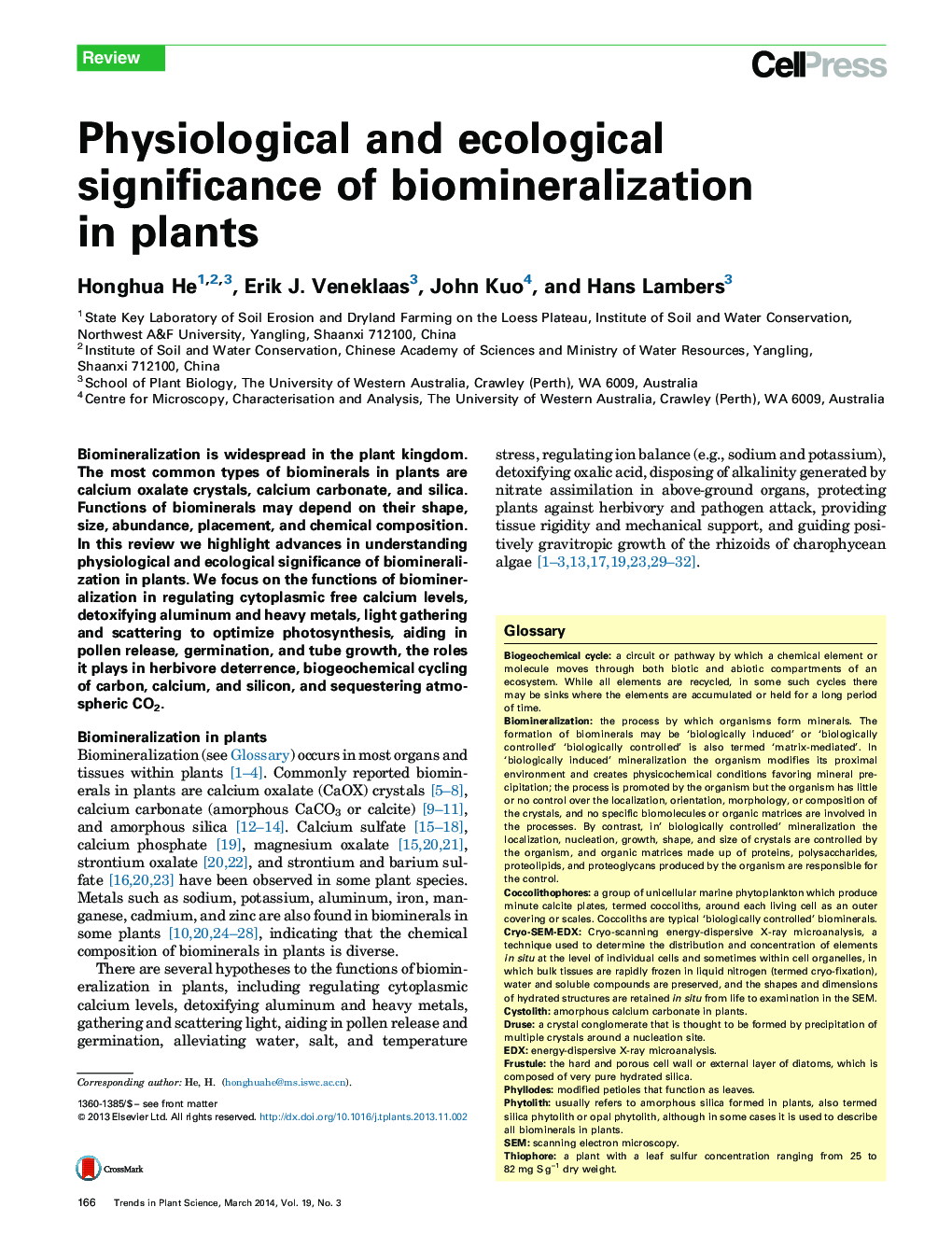| Article ID | Journal | Published Year | Pages | File Type |
|---|---|---|---|---|
| 2825846 | Trends in Plant Science | 2014 | 9 Pages |
•Biomineralization in plants has multiple diverse functions.•Regulation of cytoplasmic free Ca levels and detoxification of Al and heavy metals.•Gathering and scattering light; aiding pollen release and germination.•Herbivore deterrence.•Biogeochemical cycling of C, Ca, and Si.
Biomineralization is widespread in the plant kingdom. The most common types of biominerals in plants are calcium oxalate crystals, calcium carbonate, and silica. Functions of biominerals may depend on their shape, size, abundance, placement, and chemical composition. In this review we highlight advances in understanding physiological and ecological significance of biomineralization in plants. We focus on the functions of biomineralization in regulating cytoplasmic free calcium levels, detoxifying aluminum and heavy metals, light gathering and scattering to optimize photosynthesis, aiding in pollen release, germination, and tube growth, the roles it plays in herbivore deterrence, biogeochemical cycling of carbon, calcium, and silicon, and sequestering atmospheric CO2.
